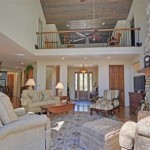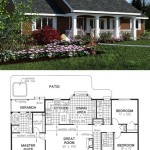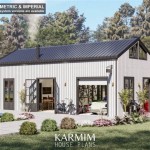Bat houses are structures designed to provide bats with a safe and suitable place to roost. They are typically made of wood or plastic and are placed in areas where bats are known to frequent, such as near water sources or in forests. Bat houses provide bats with a place to sleep, raise their young, and escape from predators.
Bat houses are an important tool for bat conservation. Bats are beneficial creatures that play a vital role in the ecosystem. They eat insects, which can help to control pests. Bats also pollinate plants and disperse seeds. However, bats are facing a number of threats, including habitat loss and pesticide use. Bat houses can help to mitigate these threats by providing bats with a place to live and raise their young.
If you are interested in building a bat house, there are a number of plans available online and in libraries. You can also purchase pre-built bat houses from a variety of retailers. When choosing a bat house, it is important to select one that is the right size and shape for the type of bats that you are trying to attract. You should also place the bat house in a location that is protected from the elements and is close to a water source.
When building or choosing a bat house, there are several important factors to consider:
- Size
- Shape
- Material
- Location
- Height
- Entrance
- Ventilation
- Drainage
- Maintenance
By following these guidelines, you can help to ensure that your bat house is successful in attracting and supporting a colony of bats.
Size
The size of your bat house is important because it will determine how many bats it can accommodate. A bat house that is too small will not be able to house a large colony of bats, and a bat house that is too large will be more difficult to heat and maintain.
- Single-chamber bat houses are typically 14 inches wide, 3 inches deep, and 24 inches tall. They can accommodate up to 150 bats.
- Double-chamber bat houses are typically 28 inches wide, 3 inches deep, and 24 inches tall. They can accommodate up to 300 bats.
- Triple-chamber bat houses are typically 42 inches wide, 3 inches deep, and 24 inches tall. They can accommodate up to 450 bats.
- Multi-chamber bat houses can accommodate even more bats. They are typically used in areas where there is a large population of bats.
When choosing a bat house size, it is important to consider the number of bats that you are trying to attract. You should also consider the size of the area where you will be placing the bat house. A bat house that is too large for the area will not be as effective.
Shape
The shape of your bat house is also important. Bats prefer bat houses that are tall and narrow, with a rough surface that they can cling to. Avoid bat houses that are wide and shallow, as these will be more difficult for bats to enter and exit.
The most common shape for a bat house is a rectangle. However, you can also find bat houses that are triangular, hexagonal, or even octagonal. As long as the bat house is tall and narrow, with a rough surface, the shape is not as important.
One important thing to consider when choosing the shape of your bat house is the size of the entrance. The entrance should be large enough for bats to enter and exit easily, but not so large that predators can enter. A good rule of thumb is to make the entrance about 3/4 inch wide and 2 inches tall.
Finally, you should also consider the location of the entrance. The entrance should be placed near the bottom of the bat house, and it should face away from the prevailing wind. This will help to keep the bat house warm and dry.
Material
The material of your bat house is also important. The material should be durable and weather-resistant, and it should not absorb moisture. The most common materials used for bat houses are:
- Wood – Wood is a good choice for bat houses because it is durable, weather-resistant, and does not absorb moisture. However, wood bat houses must be treated with a sealant to protect them from rot and decay.
- Plastic – Plastic is another good choice for bat houses because it is durable, weather-resistant, and does not absorb moisture. Plastic bat houses are also easy to clean and maintain.
- Metal – Metal bat houses are not as common as wood or plastic bat houses, but they can be a good choice if you live in an area with extreme weather conditions. Metal bat houses are durable and weather-resistant, but they can be more expensive than wood or plastic bat houses.
When choosing a material for your bat house, it is important to consider the climate in your area. If you live in an area with extreme weather conditions, you should choose a material that is durable and weather-resistant. If you live in an area with a mild climate, you can choose a material that is less durable and weather-resistant.
In addition to the material, you should also consider the color of your bat house. Bats prefer dark colors, such as black or brown. Avoid bat houses that are painted in light colors, as these will be more visible to predators.
Location
The location of your bat house is one of the most important factors in determining its success. Bats are attracted to bat houses that are located in areas that are warm, sunny, and protected from the wind. When choosing a location for your bat house, keep the following factors in mind:
- Sun exposure – Bats prefer bat houses that are located in areas that receive at least six hours of sunlight per day. This will help to keep the bat house warm and dry.
- Protection from the wind – Bats do not like windy conditions. Choose a location for your bat house that is protected from the wind, such as a sheltered area under a tree or on the side of a building.
- Water source – Bats need access to water to drink and bathe. Choose a location for your bat house that is near a water source, such as a pond, lake, or stream.
- Proximity to food – Bats eat insects. Choose a location for your bat house that is near areas where insects are abundant, such as near a forest or field.
Once you have chosen a location for your bat house, make sure that it is at least 10 feet off the ground. This will help to protect the bats from predators and the elements.
Height
The height of your bat house is important because it will determine how warm it is inside the house. Bats prefer bat houses that are at least 10 feet off the ground. This is because the higher the bat house is, the warmer it will be inside. Bats also prefer bat houses that are in direct sunlight. This is because the sun will help to heat the bat house and make it more comfortable for the bats.
- Single-story bat houses are typically 10-12 feet tall.
- Two-story bat houses are typically 12-14 feet tall.
- Three-story bat houses are typically 14-16 feet tall.
When choosing the height of your bat house, it is important to consider the climate in your area. If you live in an area with a mild climate, you can choose a bat house that is shorter. If you live in an area with a cold climate, you should choose a bat house that is taller.
In addition to the height, you should also consider the width of your bat house. The wider the bat house, the more bats it will be able to accommodate. However, a wider bat house will also be more difficult to heat. A good rule of thumb is to make the bat house about 2 feet wide for every 100 bats that you want to attract.
Finally, you should also consider the location of your bat house. The bat house should be placed in an area that is protected from the wind and rain. It should also be placed in an area that is close to a water source.
- Bats prefer bat houses that are located in areas that are warm, sunny, and protected from the wind.
- Bats also prefer bat houses that are near a water source.
By following these guidelines, you can help to ensure that your bat house is successful in attracting and supporting a colony of bats.
Entrance
The entrance to your bat house is one of the most important factors in determining its success. Bats are attracted to bat houses that have entrances that are the right size, shape, and location.
- Size – The entrance to your bat house should be about 3/4 inch wide and 2 inches tall. This is large enough for bats to enter and exit easily, but not so large that predators can enter.
- Shape – The entrance to your bat house should be a narrow slit. This will help to keep the bats warm and protected from the elements.
- Location – The entrance to your bat house should be placed near the bottom of the house, and it should face away from the prevailing wind. This will help to keep the bat house warm and dry.
- Multiple entrances – If you are building a large bat house, you should include multiple entrances. This will help to ensure that the bats have easy access to the house, and it will also help to prevent overcrowding.
By following these guidelines, you can help to ensure that your bat house is successful in attracting and supporting a colony of bats.
Ventilation
Ventilation is essential for bat houses. Bats need fresh air to breathe, and they can overheat if the bat house is not well-ventilated. There are a few things you can do to ensure that your bat house is well-ventilated:
- Use a bat house with multiple vents. This will help to create a cross-breeze and keep the air inside the bat house fresh.
- Place the bat house in a location that is exposed to the wind. This will help to circulate the air inside the bat house.
- Avoid painting the bat house a dark color. Dark colors absorb heat, which can make the bat house too hot for the bats.
- Clean the bat house regularly. This will help to remove any debris that could block the vents.
By following these tips, you can help to ensure that your bat house is well-ventilated and provides a comfortable home for bats.
Drainage
Drainage is also important for bat houses. Bats do not like to live in damp or wet conditions. Moisture can lead to the growth of mold and mildew, which can be harmful to bats. There are a few things you can do to ensure that your bat house has good drainage:
- Use a bat house with a sloped roof. This will help to shed water away from the bat house and prevent it from pooling inside.
- Place the bat house in a location that is not prone to flooding. If the bat house is in a low-lying area, it is more likely to get wet during heavy rains.
- Drill small drainage holes in the bottom of the bat house. This will allow any water that does get inside the bat house to drain out.
- Clean the bat house regularly. This will help to remove any debris that could block the drainage holes.
By following these tips, you can help to ensure that your bat house has good drainage and provides a dry and comfortable home for bats.
Maintenance
Bat houses require regular maintenance to keep them in good condition and attractive to bats. Here are some maintenance tips:
- Inspect your bat house regularly. Check for any damage to the house, such as cracks or holes. Repair any damage promptly to prevent the bats from leaving.
- Clean your bat house once a year. Remove any guano (bat droppings) and debris from the house. You can use a hose to rinse out the house, but be sure to let it dry completely before putting it back up.
- Repaint your bat house every few years. This will help to protect the house from the elements and keep it looking its best.
- Monitor your bat house for activity. If you notice that the bats are no longer using the house, there may be a problem. Check for any damage to the house or the surrounding area, and make sure that the house is still in a good location.
By following these maintenance tips, you can help to ensure that your bat house provides a safe and comfortable home for bats for many years to come.










Related Posts








